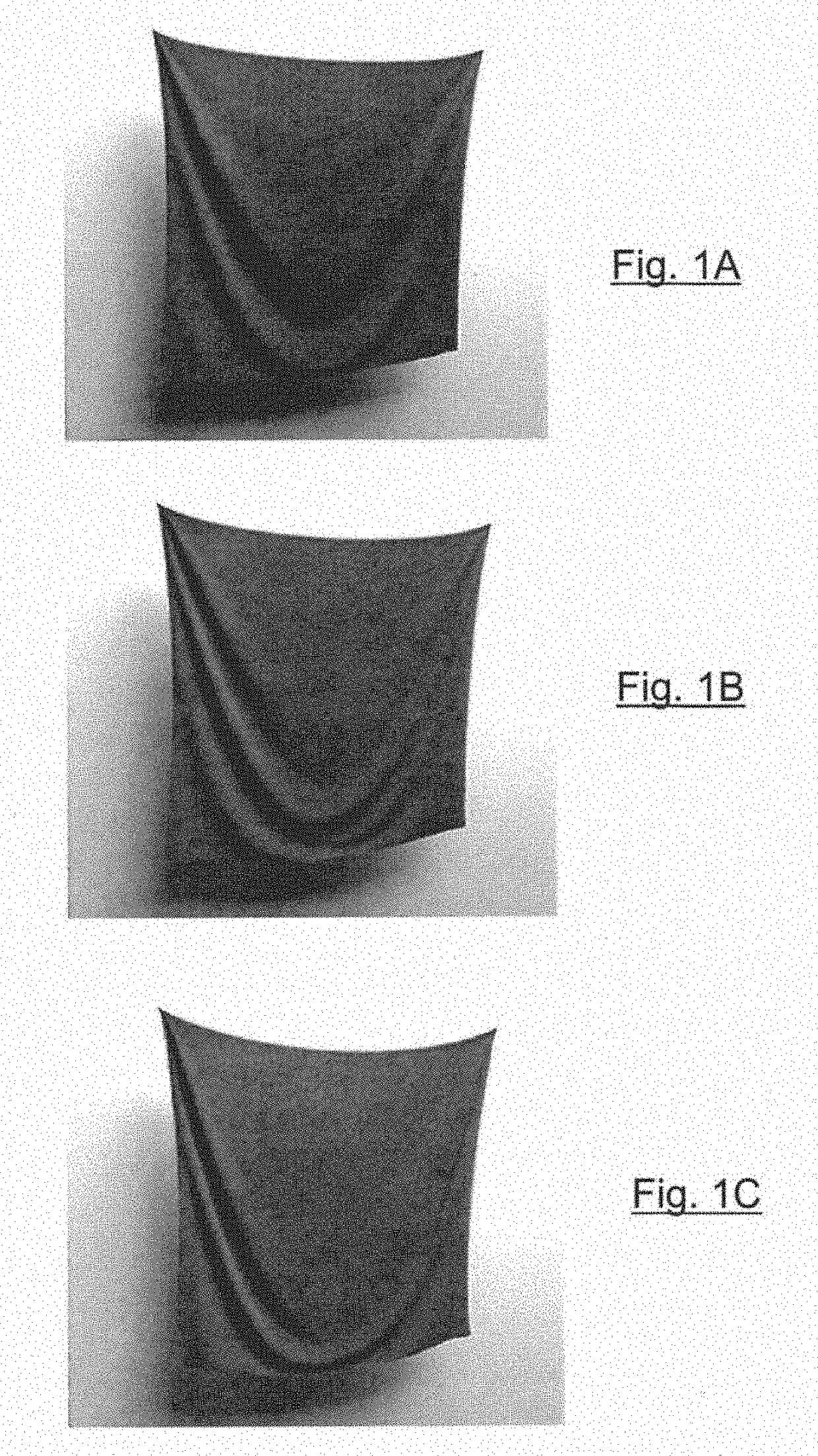Computerized method, computer program product and system for simulating the behavior of a woven textile interwoven at thread level
- Summary
- Abstract
- Description
- Claims
- Application Information
AI Technical Summary
Benefits of technology
Problems solved by technology
Method used
Image
Examples
Embodiment Construction
[0068]The large-scale mechanical behavior of woven cloth is determined by the mechanical properties of the yarns, the weave pattern, and frictional contact between yarns. Using standard simulation methods for elastic rod models and yarn-yarn contact handling, the simulation of woven garments at realistic yarn densities is deemed intractable. The present invention introduces an efficient solution for simulating woven cloth at the yarn level, using a novel discretization of interlaced yarns based on yarn crossings and yarn sliding, which allows modeling yarn-yarn contact implicitly, avoiding contact handling at yarn crossings altogether. Combined with models for infernal yarn forces and inter-yarn frictional contact, as well as a massively parallel solver, the present invention is able to simulate garments with hundreds of thousands of yarn crossings at practical frame-rates on a desktop machine, showing combinations of large-scale and fine-scale effects induced by yarn-level mechanic...
PUM
 Login to View More
Login to View More Abstract
Description
Claims
Application Information
 Login to View More
Login to View More - R&D
- Intellectual Property
- Life Sciences
- Materials
- Tech Scout
- Unparalleled Data Quality
- Higher Quality Content
- 60% Fewer Hallucinations
Browse by: Latest US Patents, China's latest patents, Technical Efficacy Thesaurus, Application Domain, Technology Topic, Popular Technical Reports.
© 2025 PatSnap. All rights reserved.Legal|Privacy policy|Modern Slavery Act Transparency Statement|Sitemap|About US| Contact US: help@patsnap.com



